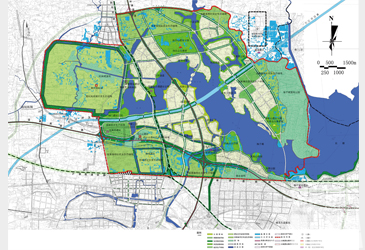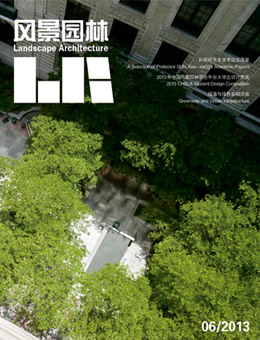Discussions on Green Space System Planning in Urban and Rural Coordination Context
温全平
WEN Quan-ping
摘要:在城乡统筹背景下,城市绿地系统规划的工作重心由以建成区为主向建成区内外并重转变已成为当下及未来发展的必然趋势。本文在坚持广义绿地概念的基础上,分析了城乡绿地的特性及其对绿地系统规划的影响,包括主导性、多样性、多功能性、动态性、实施主体的多元性。文章对当前城市绿地系统规划存在的问题进行了分析,探讨了城乡统筹背景下绿地系统规划的若干重要问题。提出赋予城乡绿地系统规划相对独立的地位,形成与城乡规划平行和互动的规划体系,在规划对象、组织系统、技术系统、规划内容等方面进行全方位的过渡与转变。
关键词:城乡规划;绿地系统规划;城乡统筹;城市绿地;区域绿地
Abstract: In urban and rural coordination context, the focus of urban green space system planning which shifts from the inside built-up area to city area has become an inevitable development trend in the present and future. Based on the generalized green space concept, this article analyzes the characteristics of urban and rural green space and the effects on green space system planning, including dominance, morphological diversity, multi-functions, dynamic and multiple subjects. The problems of urban green space system planning are concluded and the countermeasures in urban and rural coordination context are discussed. The paper proposes that urban and rural green space system planning should be given legally independent status, which is parallel to and interactive with urban and rural planning, and overall transition and transformation are needed in the aspects of planning objects, organization system, technology system and planning contents.
Key words: Urban and Rural Planning; Green Space System Planning; Urban and Rural Coordination; Urban Green Space; Regional Green Space
1 对城市绿地概念的再认识
当前对城市绿地的理解有狭义和广义之分,狭义城市绿地指城市中种植木本植物的绿化用地,不包括农田等非建设用地在内,是现行城市绿地系统规划的主要对象[1],行业规范《城市绿地分类标准CJJ/T 85-2002》基本涵盖了狭义城市绿地的全部类型。广义城市绿地指城乡地域范围内所有可生长植物的用地,包括农林用地等非建设用地,是构建完整的绿地系统规划的基础[2-3],目前尚缺乏分类规范。为论述方便,将狭义城市绿地称为城市绿地,将广义城市绿地称为城乡绿地。
随着中国城市化进程的加快,绿地系统规划的工作重心已开始从建成区向整个市域扩展,规划对象也正在从城市绿地向城乡绿地转变。以规划对象的转变为契机,针对当前城市绿地系统规划工作中存在的问题,对城乡统筹背景下绿地系统规划进行探讨具有重要的理论与现实意义。
2 城乡绿地的特性及其对绿地系统规划的影响
2.1 城乡绿地的主导性
城乡绿地的规模决定了城乡绿地的主导性。城乡绿地面广量大,是城乡复合生态系统的主体性构成要素,对城乡产业结构、空间布局、生态环境保护、景观特色塑造等多个方面均有主导作用。如何体现并具体落实这一主导性是城乡统筹背景下绿地系统规划应该解决的首要问题。
2.2 城乡绿地的多样性
主要表现为用地的多样性和景观形态的多样性。从用地上看,城乡绿地不仅分布于建设用地中,而且更多地分布于非建设用地中,决定了绿地系统规划与多个行业与部门具有交叉关系,包括林业、农业、水利、土地、文物、交通等,规划的综合性和系统性特征更加明显;从景观形态上看,人工化自然与原生自然并存,乔、灌、草分别占主体的类型均有,与各类建设用地的镶嵌关系多样,要求绿地系统规划不仅要关注二维的用地,也要重视用地上多维的景观形态。

(未完待续)
 《风景园林》2013第6期导读
《风景园林》2013第6期导读
Leave a Reply